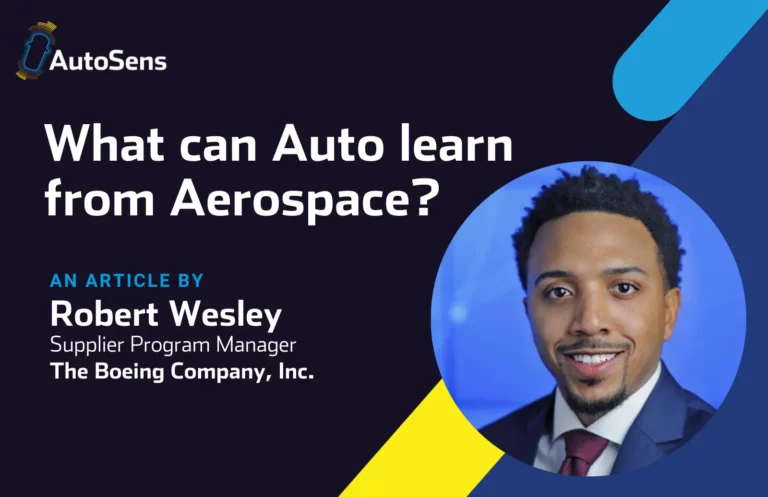
We are thrilled to have Prof. Dr. Dr. h. c. Sahin Albayrak, Professor of Computer Science and chair of Agent Technologies in Business Applications and Telecommunication (AOT) at the Technical University of Berlin, delivering a keynote session at AutoSens in Brussels 2019.
He is the founder and head of the Distributed Artificial Intelligence Laboratory (DAI-Labor) at TU Berlin, currently employing over 120 researchers. He serves as an advisor to several authorities and companies in both Germany and Turkey. He received Federal Cross of Merit by the Federal Republic of Germany, for outstanding contributions in science. He has established various successful startups and has been actively contributing to boost the Entrepreneurship in Germany.
Prof. Dr. Dr. h. c. Sahin Albayrak took time out to chat with the AutoSens team about the objectives of L-5 autonomous driving, Perception as a Service, intelligent roads, the future of autonomous driving in a complex urban environment and his DIGINET-PS Project.
You are the founder and head of the Distributed Artificial Intelligence Laboratory (DAI-Labor) at TU Berlin, what are the Lab’s current research focus areas and aims?
DAI labor, as the name suggests, focuses on the core and applied research in Distributed Artificial Intelligence. The lab is structured in a matrix form, where the core research is carried out in competence centers (horizontals) and the results are exploited by the application centers (verticals). Implanting intelligence in different applications domains including: autonomous driving, eHealth, mobile networks, e-mobility, grid management, etc. are some of the current activities. The philosophy of DAI Labor is “Future in Touch”. This is to say that we aim at bridging the gap between core and experimental research, which resulted in live testbeds / realistic experimental playgrounds for different application domains.
Thinking specifically about your work on autonomous driving, what level of importance do you place on perception as a service in terms of achieving L-5 autonomous driving?
If I am to very simply define the objectives of L-5 autonomous driving, I would say take the human out of the equation but keep his/her perception in. We should go one step ahead rather i.e., the technologies that we have today should be exploited to have much improved perception and understanding of the environment than human’s. When it comes to the role of perception for autonomous driving, it is straight forward, the better the perception the better the decision making of the Autonomous Vehicle. I place the perception at core of the overall solution chain, which is why I came up with idea of “Perception as a Service”, creation of the perceptions at three different levels: in the vehicle (through on-vehicle sensors and vehicles), in the edge (though on road deployed sensors and vehicles), and in the cloud (though aggregation of the perception from edge, vehicle, and information from network and other sources).
To what extent do we need roads to be intelligent and how far away are we from achieving this? What are the biggest barriers?
The idea is to capture the relevant dynamics of the road for autonomous driving. For this a few important items are: selection of the right sensors, choice of the right amount of sensors, deployment at the right locations, implantation of the artificial intelligence approaches in distributed manner (in vehicles, edge, and cloud). Having said this, I believe we need a gradual progress. For instance, the DigiNet-PS project captures the dynamics of around 4KM road in Berlin, although our solutions are working fine, these cannot be counted as global panacea. But this is a promising step towards that goal. Seeing the immense involvement of OEMs, operators, city authorities, EU, National funding agencies, I am very sure that we are not too far from our achieving our goals. My guess is … the next 5 years will show you something very promising. The hurdles, to name a few most obvious ones are: i) concerns of the society about the privacy and user acceptance, ii) current policies and laws that need substantial changes.
What are you most looking forward to about presenting your keynote session on “Future of Autonomous Driving in a Complex Urban Environment” at AutoSens?
Sharing my ideas and experiences with very relevant audiences at AutoSens will on one hand allow me to know how ready my solutions are for different stakeholders and on the other I may look into adjusting the future roadmap of my AD activities with the feedback from audiences.
Are you able to touch upon the aims of the DIGINET-PS Project?
Yes, of-course. DigiNet-PS aims at assisting the autonomous driving activities by: creating perception of road segments (~800m) at the edge, which is the used to enrich the AV’s perception and decision making. The philosophy of DigiNet-PS is, “Intelligent vehicle is good but Intelligent environment is better”. Hence, DigiNet-PS does not confine itself to the vehicle research only but also carries out research on how to make the environment more intelligent. It also studies on how the intelligent environment improves the vision and decision making of AVs in different scenarios.
You will also discuss the importance of Distributed Artificial Intelligence, what does this mean to you?
It has its obvious gains, which one may list as: easier adaptability, modular solution of complex problems, parallel development and evolution, extendable, and reliable.
Prof. Dr. Dr. h. c. Sahin Albayrak will be delivery a keynote session at AutoSens in Brussels 2019 on “Future of Autonomous Driving in a Complex Urban Environment” – Book your tickets to attend >>







